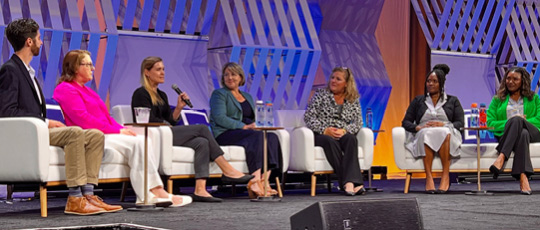For WorldatWork Members:
- Employee Engagement: Drivers, Measures and Outcomes, Journal of Total Rewards article
- The Role of Employee Ownership in Total Rewards Strategy, Journal of Total Rewards article
- Measuring Up Mentorship Programs, Workspan Magazine article
- Internal Mobility Keeps Employees from Moving On, Workspan Magazine article
- Total Rewards Inventory of Programs & Practices, research
- Total Rewards Inventory Checklist, tool
For Everyone:
- Focus on Employee Experience and Engagement to Bolster Talent Retention Efforts, Workspan Daily article
- How Gen Z is Redefining Total Rewards, Workspan Daily article
- Invest in Career Development to Retain Young Talent, Workspan Daily article
Corporate loyalty — long considered a key aspect of employee longevity — is dwindling among younger workers, according to recent research from WorkProud.
The study found that while all generations reported similar levels of pride in their organization — with about a third of respondents exhibiting “high company pride” — the relationship between high pride and corporate loyalty was particularly strong among younger workers.
Only 23% of the 1,000 surveyed full-time workers aged 42 or younger (and only 18% of workers 30 or younger) expressed a strong interest in remaining with their employer long term. Similarly, only 16% of workers 42 or younger (and only 11% of workers 30 or younger) would remain loyal to their employer if they found a similar role that paid more elsewhere.
“It’s no longer a work world where you work for a company for 30 years and get the gold watch upon retirement,” said Rick Garlick, Ph.D., a consulting partner with WorkProud and the study’s author. “If you hear today that somebody’s worked somewhere for 30 years, it’s kind of an anomaly — you can’t believe somebody’s stayed with the same company for that long.”
WorldatWork members can access a bonus Workspan Daily Plus+ article on this subject:
How Total Rewards Can Solve Loyalty Issues Among Younger Workers
Drivers of Corporate Loyalty
The quest to secure employee loyalty is longstanding. Past explorations have measured affective commitment, organizational identification and psychological employee ownership — determining that boosting these factors increases employees’ job satisfaction, engagement, performance, attitudes and well-being, and reduces absenteeism and turnover.
“Being proud to work for their organization is a classic behavioral characteristic of engaged employees,” said Kathleen Schulz, divisional vice president and global innovation leader for organizational well-being at Gallagher. “That said, pride is not something you can mandate. It’s something that needs to be inspired through the alignment of policies, practices and behaviors — through culture.”
Due to the evolving priorities and demands of younger workers, long-held retention tactics are no longer a guarantee, said Monica Martin, the senior director of integrated and global solutions and a total rewards leader at WTW.
“The biggest challenge for organizations is that younger workers want very different things than older workers,” she said. “Yet, employers continue to adopt a one-size-fits-all approach to many aspects of their rewards strategies.”
Evolving Employee Priorities
According to Martin, here’s what today’s workers — particularly younger ones — expect from their employers:
- Equity and transparency in pay and career opportunities;
- Flexibility in how, where and when work is completed;
- Generous leave policies;
- Financial well-being and mental health benefits;
- Career development opportunities; and,
- Customizable and personalized rewards.
Younger workers are also more likely to prioritize working for an employer that shares their values, recognizes and appreciates their differences, and is a “good corporate citizen” with diversity, equity and inclusion (DEI) or environmental, social and governance (ESG) initiatives, Garlick said.
The corporate loyalty exhibited by today’s younger employees may appear more transactional — if these workers don’t feel their needs are being met by their employers, they’re less inclined to stay in the hopes that things will improve, Garlick said.
“Particularly with new workers, these are table stakes now,” he said. “‘You don’t treat me well, you don’t recognize me, I’m out of here.’ It’s no longer nice-to-have — these are business necessities.”
As the economy continuously transitions from a manufacturing- or production-driven model to one that is driven by knowledge, turnover becomes more costly, Garlick said.
“In a big company, even if every worker makes $30,000 a year ... all of a sudden, the [turnover] dollars get very big very quickly,” he said. “It’s really a financial problem for companies to have all of that employee turnover.”
Editor’s Note: Additional Content
For more information and resources related to this article, see the pages below, which offer quick access to all WorldatWork content on these topics:




